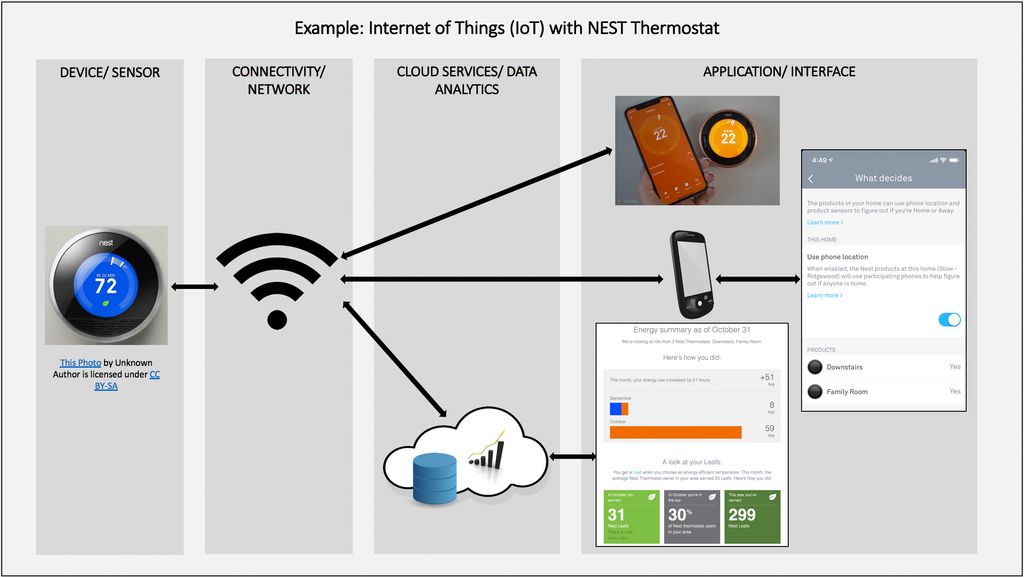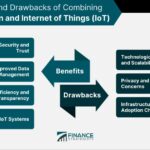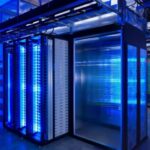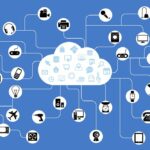The Internet of Things (IoT) has revolutionized the way businesses operate, allowing for greater connectivity and automation. In this article, we will explore the top 10 examples of IoT in business, ranging from smart home automation to connected healthcare. These examples showcase the diverse applications of IoT technology and highlight its potential to improve efficiency, enhance customer experiences, and drive innovation.
Key Takeaways
- Smart home automation enables voice-controlled devices, energy management systems, and security and surveillance systems.
- Industrial IoT facilitates predictive maintenance, asset tracking and management, and remote monitoring and control.
- Smart agriculture utilizes IoT for crop monitoring and management, livestock tracking and health monitoring, and automated irrigation systems.
- Connected healthcare benefits from remote patient monitoring, smart medical devices, and telemedicine.
- Smart retail leverages IoT for inventory management, customer analytics, and personalized shopping experiences.
Smart Home Automation

Voice-controlled devices
Voice-controlled devices are a key component of smart home automation. These devices, such as smart speakers and virtual assistants, allow users to control various aspects of their homes using voice commands. With advanced features like natural language processing and machine learning, voice-controlled devices can understand and respond to complex commands. They can adjust the temperature, turn on lights, play music, and even order groceries online. The convenience and ease of use offered by voice-controlled devices have made them increasingly popular among consumers.
Energy management systems
Energy management systems are a crucial component of smart home automation. These systems enable homeowners to monitor and control their energy usage, resulting in cost savings and increased efficiency. Smart thermostats are one example of an energy management system that allows users to adjust the temperature of their homes remotely. By optimizing heating and cooling, homeowners can reduce energy waste and lower their utility bills.
Another important feature of energy management systems is real-time energy monitoring. This allows users to track their energy consumption and identify areas where energy is being wasted. By analyzing this data, homeowners can make informed decisions about their energy usage and implement strategies to reduce waste.
In addition, energy management systems often include smart plugs and smart power strips. These devices allow users to control the power supply to individual appliances or groups of appliances. By turning off devices when they are not in use, homeowners can further reduce energy waste and save money.
Security and surveillance systems
Security and surveillance systems play a crucial role in smart home automation. These systems use advanced technologies to monitor and protect homes from potential threats. With the integration of IoT, homeowners can remotely access and control their security systems using their smartphones. This allows them to monitor their homes in real-time and receive instant alerts in case of any suspicious activities. Additionally, security cameras equipped with IoT capabilities can provide high-quality video footage and advanced features like facial recognition and motion detection. These features enhance the overall security of the home and provide valuable evidence in case of any incidents.
Industrial IoT

Predictive maintenance
Predictive maintenance is a key application of Industrial IoT that uses advanced analytics and machine learning algorithms to predict when equipment is likely to fail. By continuously monitoring the condition of machines and analyzing historical data, businesses can identify potential issues before they occur, allowing for proactive maintenance and minimizing downtime.
One of the main benefits of predictive maintenance is cost savings. By addressing maintenance needs before they become critical, businesses can avoid costly repairs and unplanned downtime. Additionally, predictive maintenance can help optimize maintenance schedules, reducing the frequency of unnecessary maintenance tasks and maximizing the lifespan of equipment.
To implement predictive maintenance, businesses need to collect and analyze data from various sources, including sensors, machine logs, and historical maintenance records. This data is then used to train machine learning models that can accurately predict equipment failures and recommend appropriate maintenance actions.
In summary, predictive maintenance is a powerful application of Industrial IoT that enables businesses to proactively address maintenance needs, reduce downtime, and optimize maintenance schedules. By leveraging advanced analytics and machine learning, businesses can save costs and improve the overall efficiency of their operations.
Asset tracking and management
Asset tracking and management is a crucial aspect of industrial IoT. It involves monitoring and controlling the movement and status of assets, such as equipment, vehicles, and inventory, in real-time. By implementing IoT technologies, businesses can gain valuable insights into their assets’ location, condition, and utilization, leading to improved operational efficiency and cost savings. Asus reputation in the technology industry is well-known, and their IoT solutions for asset tracking and management are highly regarded. These solutions offer advanced features and capabilities, including real-time tracking, predictive maintenance, and analytics, empowering businesses to optimize their asset management processes.
Remote monitoring and control
Remote monitoring and control is a key application of Industrial IoT. It allows businesses to monitor and control their operations from a remote location, providing real-time insights and enabling proactive decision-making. With the advancements in technology, businesses can now remotely monitor and control various aspects of their operations, such as equipment performance, energy consumption, and production processes.
One of the key benefits of remote monitoring and control is the ability to detect and address issues before they escalate. By continuously monitoring equipment and processes, businesses can identify potential problems and take corrective actions in a timely manner. This not only helps in preventing costly downtime but also improves overall operational efficiency.
In addition to monitoring and control, Industrial IoT also enables businesses to optimize their operations. By analyzing the data collected from remote monitoring, businesses can identify areas for improvement and implement strategies to increase productivity and reduce costs.
Overall, remote monitoring and control is revolutionizing the way businesses operate. It provides real-time insights, improves operational efficiency, and enables proactive decision-making. With the increasing adoption of Industrial IoT, businesses can expect to see significant improvements in their operations and bottom line.
Smart Agriculture

Crop monitoring and management
Crop monitoring and management is a crucial aspect of smart agriculture. It involves the use of IoT devices and sensors to collect data on various factors such as soil moisture, temperature, and nutrient levels. This data is then analyzed to make informed decisions and optimize crop production. One of the key benefits of IoT in crop monitoring and management is the ability to improve efficiency and reduce resource waste. By monitoring the conditions in real-time, farmers can take timely actions to address issues such as water scarcity or pest infestation, leading to higher yields and lower costs. Additionally, IoT-enabled crop monitoring systems can contribute to sustainable agriculture practices by promoting precision farming techniques and reducing the use of harmful chemicals.
Livestock tracking and health monitoring
Livestock tracking and health monitoring is a crucial aspect of smart agriculture. By leveraging IoT technology, farmers can keep track of their livestock’s location and health status in real-time. This enables them to detect any potential issues early on and take necessary actions to ensure the well-being of their animals. With the help of IoT sensors and devices, farmers can monitor vital signs such as body temperature, heart rate, and activity levels. This data can be analyzed to identify patterns and trends, allowing farmers to make informed decisions regarding the health and management of their livestock.
Automated irrigation systems
Automated irrigation systems are a crucial component of smart agriculture. These systems use sensors and data analysis to determine the optimal amount of water needed for crops. By automating the irrigation process, farmers can ensure that their crops receive the right amount of water at the right time, leading to improved crop yield and water efficiency. Decision making is also enhanced as farmers can rely on real-time data to make informed decisions about irrigation scheduling and water allocation. This helps to prevent overwatering or underwatering, which can have detrimental effects on crop health and yield. Additionally, automated irrigation systems can be integrated with weather forecasts to adjust watering schedules based on upcoming weather conditions, further optimizing water usage. Overall, automated irrigation systems play a vital role in sustainable agriculture by promoting efficient water management and enabling farmers to make data-driven decisions for optimal crop growth and yield.
Connected Healthcare

Remote patient monitoring
Remote patient monitoring is a crucial aspect of connected healthcare. It allows healthcare providers to monitor patients’ health remotely and gather real-time data without the need for in-person visits. This technology enables patients to receive continuous care from the comfort of their own homes, reducing the need for hospital stays and improving overall patient outcomes.
One of the key benefits of remote patient monitoring is the ability to detect early warning signs of health issues. By continuously monitoring vital signs and other health parameters, healthcare providers can identify any deviations from normal levels and intervene promptly. This proactive approach can help prevent complications and reduce the risk of hospital readmissions.
In addition to monitoring vital signs, remote patient monitoring can also include medication management. Patients can receive reminders to take their medications and healthcare providers can track medication adherence. This helps ensure that patients are following their prescribed treatment plans and can lead to better medication outcomes.
Another important aspect of remote patient monitoring is the ability to communicate with healthcare providers virtually. Patients can use telemedicine platforms to have virtual consultations with their doctors, nurses, or other healthcare professionals. This not only provides convenience for patients but also allows for timely communication and reduces the need for unnecessary in-person visits.
Overall, remote patient monitoring is revolutionizing the way healthcare is delivered. It empowers patients to take an active role in their own health management and enables healthcare providers to deliver personalized and proactive care. With the advancements in technology, remote patient monitoring is expected to continue to grow and improve, benefiting both patients and healthcare systems.
Smart medical devices
Smart medical devices play a crucial role in connected healthcare. These devices are equipped with advanced sensors and wireless connectivity, allowing healthcare professionals to remotely monitor patients’ vital signs and health conditions. By collecting real-time data, smart medical devices enable early detection of potential health issues and prompt intervention. This not only improves patient outcomes but also reduces the need for frequent hospital visits, making healthcare more accessible and convenient.
In addition to remote patient monitoring, smart medical devices also offer other benefits. For example, they can automate the process of medication management, ensuring patients take the right dosage at the right time. This helps prevent medication errors and improves medication adherence. Furthermore, smart medical devices can facilitate telemedicine, enabling patients to consult with healthcare providers remotely, saving time and reducing the burden on healthcare facilities.
To illustrate the impact of smart medical devices, let’s consider the use of drones in healthcare delivery. Drones equipped with medical supplies can be used to deliver essential medications and supplies to remote or inaccessible areas. This is particularly valuable in emergency situations or during natural disasters when traditional transportation methods may be disrupted. By leveraging drones, healthcare organizations can ensure timely delivery of critical resources, potentially saving lives.
In summary, smart medical devices are revolutionizing healthcare by enabling remote patient monitoring, improving medication management, and facilitating telemedicine. The use of innovative technologies like drones further enhances the capabilities of these devices, expanding access to healthcare and improving emergency response.
Telemedicine
Telemedicine is revolutionizing healthcare by leveraging technology to provide remote medical services. With the advancements in AI and telecommunication, patients can now receive medical consultations, diagnoses, and treatment from the comfort of their own homes. This has greatly improved access to healthcare, especially for individuals in remote areas or those with limited mobility. Telemedicine also enables healthcare providers to reach a larger patient population and provide timely care. Additionally, AI algorithms can analyze patient data and assist in diagnosing diseases, predicting outcomes, and recommending personalized treatment plans. This helps healthcare professionals make more informed decisions and improves patient outcomes.
Smart Retail

Inventory management
Inventory management is a crucial aspect of running a successful retail business. It involves tracking and controlling the flow of goods from suppliers to the point of sale. Effective inventory management ensures that the right products are available at the right time, minimizing stockouts and overstock situations. It also helps in optimizing cash flow and reducing carrying costs.
One of the key challenges in inventory management is communication. With multiple stakeholders involved, including suppliers, distributors, and retail staff, effective communication is essential to ensure accurate and timely information exchange. This includes communicating stock levels, delivery schedules, and any issues or changes that may impact inventory availability.
To streamline communication in inventory management, businesses can leverage technology solutions such as cloud-based inventory management systems. These systems provide real-time visibility into inventory levels, automate order management, and facilitate seamless communication between different parties. By centralizing information and enabling collaboration, businesses can improve efficiency, reduce errors, and enhance customer satisfaction.
In addition to technology solutions, establishing clear communication protocols and processes is also important. This includes defining roles and responsibilities, setting up regular communication channels, and implementing feedback mechanisms. By fostering a culture of open and transparent communication, businesses can overcome challenges and ensure smooth inventory management operations.
In conclusion, effective communication plays a critical role in inventory management. By leveraging technology solutions and establishing clear communication protocols, businesses can optimize their inventory processes and improve overall operational efficiency.
Customer analytics
Customer analytics is a powerful tool that allows businesses to gain valuable insights into their customers’ behavior and preferences. By analyzing data from various sources such as purchase history, website interactions, and social media activity, businesses can understand their customers’ needs and preferences better. This information can then be used to personalize marketing campaigns, improve customer service, and make data-driven business decisions.
One of the key benefits of customer analytics is the ability to identify trends and patterns in customer behavior. By analyzing large amounts of data, businesses can uncover hidden insights that can help them identify opportunities for growth and improvement. For example, customer analytics can reveal which products or services are most popular among certain customer segments, allowing businesses to tailor their offerings to meet specific customer needs.
Another advantage of customer analytics is the ability to measure the effectiveness of marketing campaigns. By tracking customer interactions and conversions, businesses can determine which marketing strategies are most successful and allocate resources accordingly. This data-driven approach can help businesses optimize their marketing efforts and maximize return on investment.
However, it is important to note that customer analytics also has its limitations. While it can provide valuable insights, it is not a substitute for human judgment and intuition. Businesses should use customer analytics as a tool to support decision-making, but ultimately, human expertise is still needed to interpret the data and make informed decisions.
In conclusion, customer analytics is a powerful tool that can help businesses gain valuable insights into their customers’ behavior and preferences. By leveraging data analysis techniques, businesses can personalize marketing campaigns, improve customer service, and make data-driven business decisions. However, it is important to use customer analytics as a tool to support decision-making and not rely solely on the data. Human judgment and expertise are still essential in interpreting the data and making informed decisions.
Personalized shopping experiences
In the era of digital transformation, personalized shopping experiences have become a key focus for retailers. By leveraging IoT technologies, retailers can gather and analyze vast amounts of customer data to provide tailored recommendations and offers. This not only enhances the customer experience but also increases customer loyalty and drives sales.
One way retailers achieve personalized shopping experiences is through the use of customer analytics. By tracking customer behavior, preferences, and purchase history, retailers can gain valuable insights into individual customer preferences and create personalized product recommendations. This helps customers discover new products and increases the likelihood of making a purchase.
Another aspect of personalized shopping experiences is inventory management. IoT sensors can be used to monitor inventory levels in real-time, ensuring that popular products are always in stock. This reduces the risk of out-of-stock situations and improves customer satisfaction.
Additionally, retailers can use IoT technologies to offer location-based promotions. By leveraging geolocation data from customers’ smartphones, retailers can send targeted offers and discounts when customers are near a physical store. This not only drives foot traffic but also creates a sense of urgency and exclusivity.
Overall, personalized shopping experiences powered by IoT technologies are revolutionizing the retail industry. By understanding individual customer preferences and providing tailored recommendations, retailers can create a more engaging and satisfying shopping journey for their customers.
Conclusion
In conclusion, the Internet of Things (IoT) has revolutionized the way businesses operate. From improving efficiency and productivity to enhancing customer experiences, IoT has proven to be a game-changer in various industries. The top 10 IoT examples in business showcased in this article demonstrate the diverse applications of IoT, from smart manufacturing and logistics to healthcare and retail. As technology continues to advance, we can expect even more innovative and transformative uses of IoT in the future. It is clear that embracing IoT is essential for businesses looking to stay competitive and thrive in the digital age.
Frequently Asked Questions
What is IoT?
IoT stands for Internet of Things. It refers to the network of physical devices, vehicles, appliances, and other objects embedded with sensors, software, and connectivity, which enables these objects to connect and exchange data.
How does IoT work?
IoT devices collect data from their environment using sensors or other means, and then transmit that data to a central system or cloud platform for processing and analysis. The processed data can then be used to trigger actions or provide insights.
What are some benefits of IoT in business?
IoT can provide businesses with real-time data and insights, improve operational efficiency, automate processes, enhance customer experiences, enable predictive maintenance, and enable new business models and revenue streams.
Is IoT secure?
IoT security is a concern due to the large number of devices and the potential vulnerabilities they may have. However, with proper security measures such as encryption, authentication, and regular software updates, the risks can be mitigated.
What are some challenges of implementing IoT in business?
Some challenges of implementing IoT in business include data privacy and security concerns, interoperability issues between different devices and systems, scalability and managing large amounts of data, and the need for skilled personnel.
What are some examples of IoT in everyday life?
Some examples of IoT in everyday life include smart home devices like thermostats and security systems, wearable fitness trackers, smart appliances, connected cars, and voice-controlled assistants like Amazon Alexa or Google Assistant.




